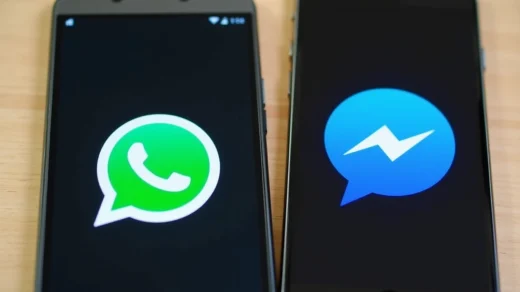Understanding Mobile App Security Challenges
Building a mobile app can feel like crafting a masterpiece—exciting, creative, and full of potential. But lurking in the shadows are challenges that can dismantle even the most brilliant app: security vulnerabilities. Threats don’t just knock on the door; they sneak through the cracks. To build resilient apps, it’s crucial to understand the obstacles before you can crush them.
Why Security Feels Like Walking a Tightrope
Developers face a balancing act when tackling security. Your app needs to be sleek and user-friendly, but also tough as nails against malicious attacks. Hackers often target apps because they’re treasure troves of sensitive data like passwords, payment details, and location information.
The challenges? Oh, they’re plenty:
- Data In Transit: Without encryption, data traveling between servers and users is a sitting duck for hackers.
- Weak Authentication: Are your users protected with two-factor authentication, or is a simple password enough to break in?
- Code Tampering: Hackers reverse-engineer apps to modify code, revealing vulnerabilities or stealing intellectual property.
The Invisible Threats You Might Overlook
Not all risks wave red flags. Some creep in silently, hiding in plain sight. Take insecure APIs, for instance—they’re the invisible lifeblood connecting app functions. If they aren’t fortified, attackers can exploit them to gain unauthorized access. Then, there’s malware masquerading as innocent third-party libraries, infecting your app from the inside. Don’t underestimate these quiet invaders; they pack a punch.
Understanding these challenges isn’t paranoia—it’s preparation. By facing the threats head-on, you’re arming yourself to create not just an app, but a fortress of digital trust.
Best Practices for Building Secure Mobile Apps

Fortify Your App’s Foundation
When it comes to mobile app security, think of your app as a house. Would you ever skip locking the doors or reinforcing the windows? Probably not. The same logic applies to your app—security starts at its foundation. Here’s where to begin:
- Secure your code like a vault: Minimize vulnerabilities by writing clean, error-free code. Obfuscate and encrypt it to keep prying eyes away.
- Authentication is king: Two-factor authentication (2FA) isn’t optional anymore—it’s essential. Factor in biometrics too for next-level defense. Fingerprint readers are more than a gimmick; they’re game-changers.
- Your data deserves respect: Encrypt sensitive user data in transit and at rest. Think end-to-end encryption. If anyone snoops, all they’ll see is gibberish.
Prepare for What You Can’t Predict
Surprises are fun—just not when it comes to security breaches. Build mechanisms into your app that can withstand the unexpected. Regularly test with simulated attacks through penetration testing. It’s like stress-testing your app against virtual earthquakes.
And let’s not forget updates. Patching vulnerabilities quickly after discovering them isn’t just recommended—it’s non-negotiable. Apps that stand still become relics, and relics are easy targets.
Finally, look beyond your app. Vet third-party libraries carefully. If you’re borrowing someone else’s tool or code, make sure it measures up in terms of security. Even one weak link could bring down your entire fortress.
Case Studies of Mobile App Security Breaches

When Security Slips: Real-World Examples
What happens when mobile app security falters? Let’s dive into real-life stories that feel more like thrillers than tech tales. Picture this: in 2019, the WhatsApp Pegasus spyware attack came to light. A single missed call via WhatsApp enabled hackers to unleash malware that spied on users’ messages, calls, and even activated their cameras. The kicker? Victims didn’t even need to answer the call. It was a chilling reminder that even trusted giants have cracks in their armor.
Then there’s the infamous Starbucks app fiasco. Hackers exploited weak password protections to drain funds from user accounts linked to mobile payments. Imagine waking up, craving your latte, only to find your savings were spent on someone else’s caffeine fix.
- 2014: Millions of Snapchat photos leaked due to a vulnerable third-party app.
- 2017: Equifax suffered a breach because of unpatched software, compromising 147 million people.
These cases aren’t just stories—they’re cautionary tales reminding developers everywhere that one weak link can set off a catastrophic chain reaction. Would your app survive such a test?
Lessons Learned from Security Failures and Successes

Why Failures Are Goldmines of Insight
When a mobile app security strategy crumbles, it feels like watching a castle built on sand dissolve into the tide—disheartening, yet eye-opening. Every breach holds clues, breadcrumbs hinting at what went wrong and how to do better. Take the infamous case of 2019’s Facebook data exposure: an unsecured Amazon S3 bucket led to private user information being leaked. It’s a classic tale of misplaced trust in default settings. Lesson? Always question your configurations and, when in doubt, double-lock the doors.
But let’s not forget the wins either. Look at how Duo Security implemented multi-factor authentication with razor-sharp execution. Their success was grounded in simplicity—making secure access easy without sacrificing usability.
- Avoidable mistakes: Overlooking encryption or using outdated protocols.
- Smart strategies: Regular penetration testing and educating your team on evolving threats.
Turning Lessons Into Action
Security failures should feel like a mentor whispering hard truths—not like a guillotine falling. One small error can cascade like dominos, but the trick is knowing how to stop things in their tracks. Developers who implement continuous integration tools, for instance, are building app “armor” that adapts faster than attackers can strike.
If anything sticks, let it be this: failures aren’t fatal, they’re fuel for improvement. Study them. Respect them. Let them guide your next move.
Essential Tools and Resources for Mobile App Security

Unlocking Your Mobile App’s Defense Arsenal
Imagine your mobile app is a fortress. What keeps the walls sturdy? The right tools, of course! Whether you’re a solo developer or managing a team, equipping yourself with cutting-edge solutions is like having an elite team of bodyguards for your app. Here’s what should always be in your toolkit:
- Mobile App Security Testing Tools: Think of these as your magnifying glass for vulnerabilities. Tools like OWASP ZAP and Burp Suite help you hunt down weak links before hackers do.
- Encryption Libraries: Don’t leave sensitive user data lying around. Libraries like libsodium and WebCrypto ensure everything from passwords to messages stays locked up tight.
Knowledge Hubs That Matter
No one builds secure apps in a vacuum. Knowledge is power, and staying on top of resources makes all the difference. Bookmark sites like the OWASP Mobile AppSec Verification Standard (MASVS)—your goldmine for best practices. Feeling stuck? Dive into forums like Stack Overflow or GitHub discussions—it’s where fresh ideas and troubleshooting magic happen.
With these tools and guides by your side, you won’t just build secure apps—you’ll build trust.





